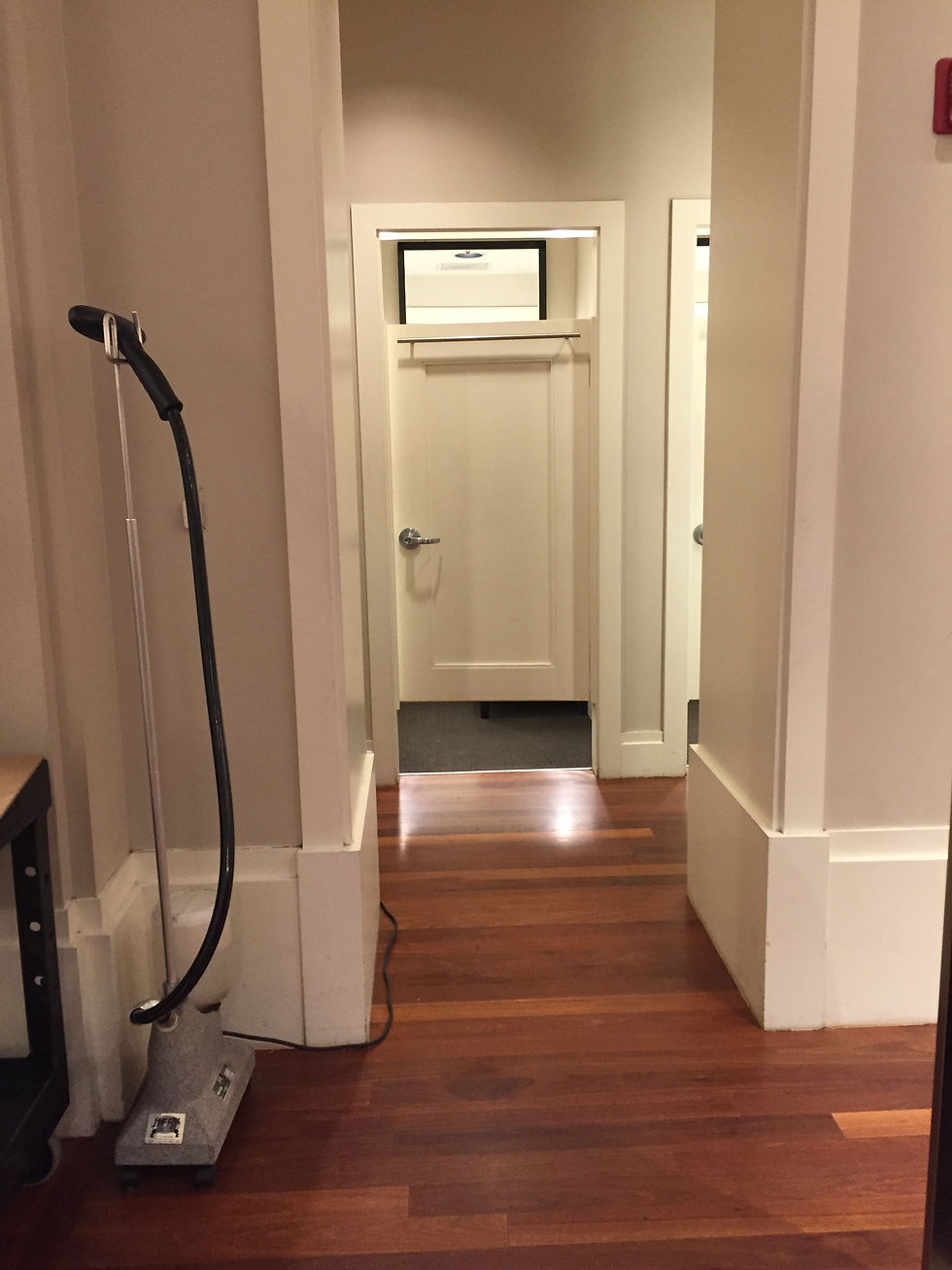FASHION GURU
Teammates: Anqi Wan, Stephanie Truong
Role & Contributions: UX design, experience prototyping, user research, journey mapping
Carnegie Mellon University | Spring 2017
Challenge
Explore the features of a conversational user interface in the context of a retail store dressing room.
Outcome
Fashion Guru is a voice-based assistant that ensures customers are comfortable in the dressing room and in the clothes they are trying on. Final deliverable was an experience prototype for our voice UI.
BACKGROUND & CONTEXT
In the emerging world of conversational UI, there are many unexplored opportunities. The technology has already been presented as a companion at home, eager to perform seemingly small interactions like reading your calendar or turning on lights. How would it expand outside the home? And would we want it to?
Initial Research
We began by researching the current dressing room experience. We went to a few stores ourselves to experience the process and identify possible pain points. We found the most frustrating aspects to be awkward interactions with sales attendants. They were sometimes difficult to locate, and we found ourselves having to rely on them for nearly every request from inventory questions to unlocking dressing rooms for us. This created a reluctance to bother them.
Additionally, we found studies covering customers' opinions on their interactions in dressing rooms. Dressing rooms are a crucial service to have for stores, as items that make it to the dressing room have much lower return rates. They are an important step in conversion in the decision to buy. However, almost 50% of customers hate trying on clothes in stores, which is detrimental to sales. Customers reported sales attendants' unavailability at times to be stressful, but their unwanted attention (i.e. knocking) at other times to be annoying.
EXPERIENCE PROTOTYPING
Design Opportunities with CUI
Was there a meaningful reason to use CUI for this specific context? We thought about what sorts of advantages a CUI would have over traditional screen-based graphical use interfaces (GUIs) or human interaction in a dressing room scenario.
In this context, the customer's hands and visual attention will be occupied with changing, so a hands-free CUI has a definite advantage over a touch-based GUI screen. Driven by artificial intelligence, a CUI could deliver information more accurately and efficiently than a human. Their inhumanness also relieves the customer's feelings of being overly bothersome. CUIs can remain unobtrusive, but with AI have the ability to deliver reliable and highly personalized attention when called for assistance. Lastly, other technology like motion sensors and RFID tags can support the CUI by helping it detect the customer's preferences and needs without her saying a word, creating a more seamless experience.




Brainstorming & Storyboarding
We brainstormed some scenarios that might occur in a dressing room, trying to find more specific design opportunities. These included shopping for an occasion, wanting different sizes or colors, adjusting the lighting and atmosphere, and asking for advice.
We wrote several scripts for a CUI, thinking about what features it might have and how it would prompt the user to speak. In our earlier revisions, we found that our scope was too broad, and we didn't particularly take advantage of the unique advantages of a CUI, instead often prompting non-conversational binary answers.



Feedback for Improvements
Experience prototypes, a mix of user testing and rapid prototyping, helped us see our CUI design play out in mock context. In our first run, we learned that our design was poorly equipped to address off-script dialogue, when people didn't ask what we expected or asked in a different way.
We also found that customers didn't know what questions they could ask, so we needed to somehow communicate the CUI's capabilities. Users also mentioned they didn't know how they could trust the CUI's fashion recommendations.
The sales attendant bringing clothing seemed to be a positive point. She shows up at the right time to avoid awkward interaction and intrusion, and save the customer time as well.

Revising and Refining
Through multiple iterations, we picked up on some true advantages of CUI in the dressing room, and focused on exploiting these points for our final prototype.
When we decided to keep the sales attendant bringing clothing, we took a hard look at the root problem with the dressing room experience for customers. It's easy enough to articulate that it is bothersome and inefficient to change in and out of clothes, and to initiate contact with a busy sales attendant. But we also identified an underlying psychological stressor, the sense of vulnerability involved in an intimate act like changing in a public place. Furthermore, when a customer walks out to look for a different size, it is an implicit announcement that something did not fit, potentially evoking insecurity about body image.
By implementing a CUI in the dressing room, we enable a number of things: security by allowing the customer to stay in the dressing room and consult a judgment-free machine; efficiency by using the precision of artificial intelligence; and increasing conversion by supporting the customer's browsing, keeping them in the dressing room longer.
With this in mind, our final scenario focused on the very specific task of finding a good-fitting pair of jeans. Taking advantage of the CUI's low requirement for the user's attention, we incorporated movement tests for the customer to determine the jeans' fit and comfort. By talking through the problems she finds with Fashion Guru, the customer lands on a pair of jeans tailored to her desires. Fashion Guru bridges the customer's everyday language with the retail world's obscure terminology. The video above plays out our final script.
LEARNING & IMPLICATIONS
-
Identifying the advantages of a conversational user interfaces
-
Identifying a specific pain point for design opportunity from user research
-
Writing dialogue for a CUI that provides clear feedforward about the user's options, as well as feedback to acknowledge a user's input
-
Accounting for multiple human senses and the environment in shaping a user's experience